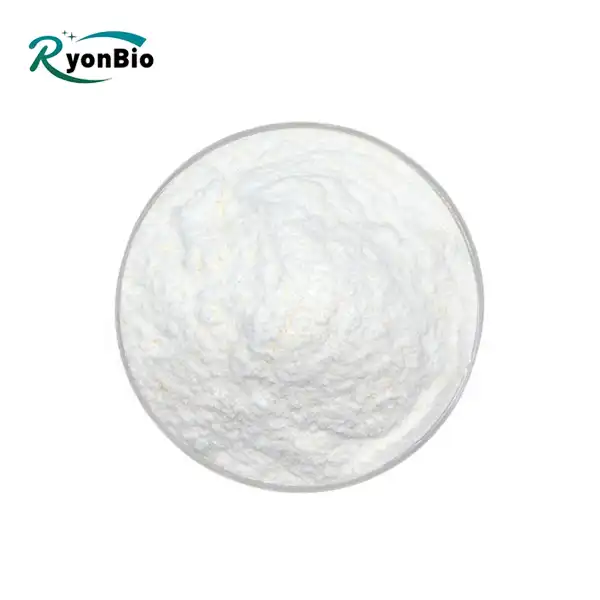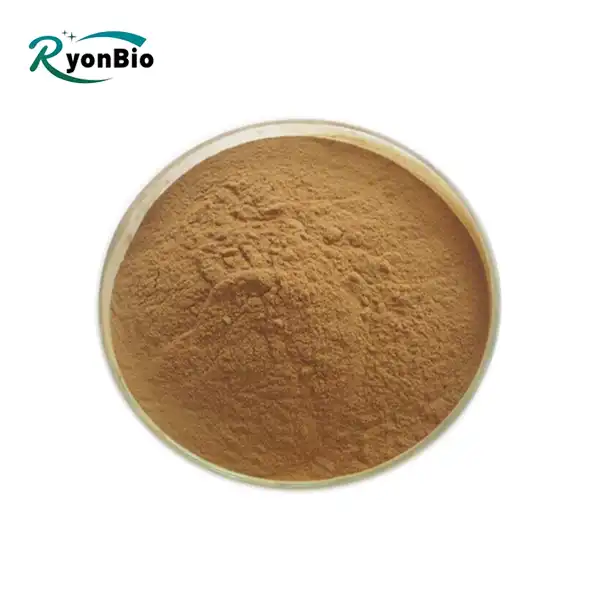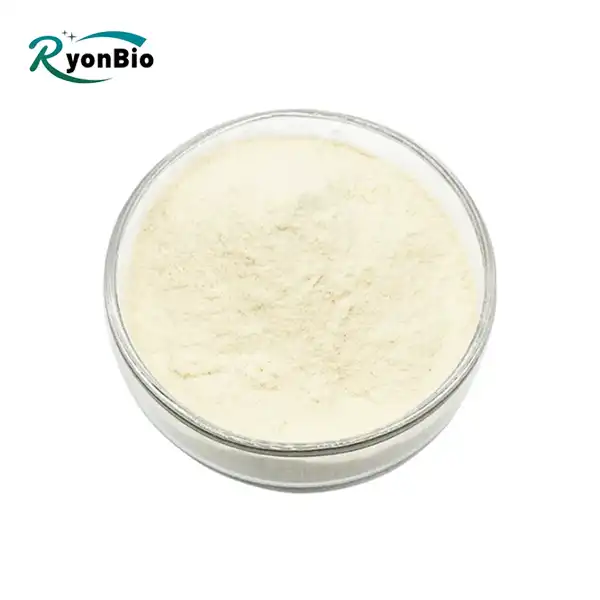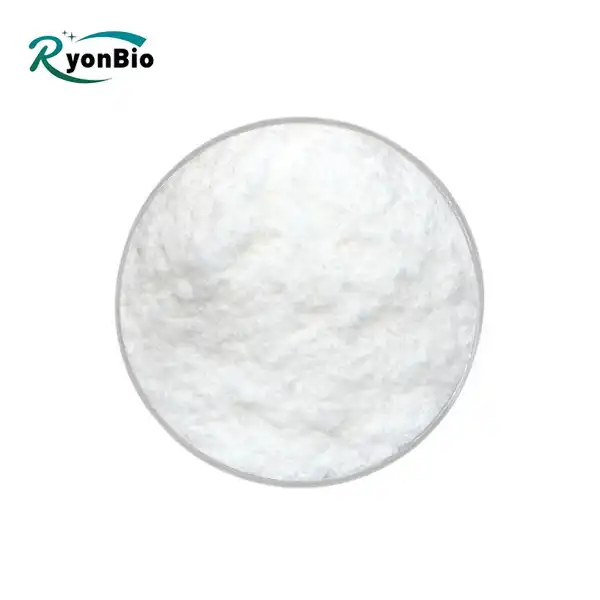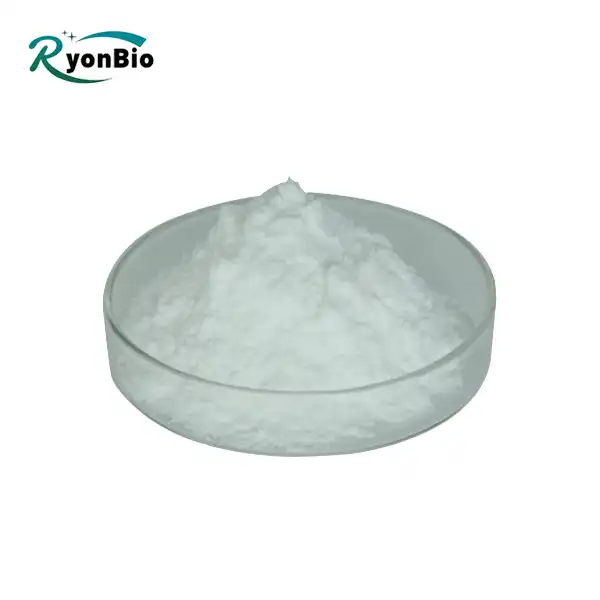As a food scientist with expertise in the formulation of confectionery products, I am often inquisitive about the specific applications of various ingredients in our favorite treats. Sorbitol Powder, a polyol known for its sugar-like taste and beneficial properties, plays a significant role in the production of gummy bears. This article will explore the functions of Sorbitol Powder in gummy bears, its advantages, and how it contributes to the texture and quality of these popular candies.

The Role of Sorbitol Powder in Gummy Bear Texture
Sorbitol Powder is a key ingredient in gummy bears due to its humectant properties. It helps to retain moisture within the candy, ensuring a soft and chewy texture that consumers love. This is particularly important as it prevents the gummies from becoming hard or stale, thereby extending their shelf life.
Sweetening Gummy Bears with Sorbitol Powder
Sorbitol Powder, although less sweet than traditional sugar, offers a nuanced sweetness that harmonizes with the fruity profiles inherent in gummy bears. This subtle sweetness plays a crucial role in achieving a well-balanced taste profile, preventing the gummies from becoming overly sweet while accentuating their natural flavors. Moreover, sorbitol's composition contributes to the textural integrity of gummy candies, ensuring a chewy yet firm consistency that enhances the overall sensory experience. By leveraging sorbitol powder in gummy bear production, confectioners not only maintain flavor fidelity but also cater to health-conscious consumers seeking reduced-sugar options without compromising on taste or quality.

Health Benefits of Using Sorbitol Powder in Gummy Bears
Sorbitol Powder has emerged as a highly favorable ingredient for health-conscious consumers seeking sugar-free or reduced-sugar options in gummy bears. Its distinct advantages include a lower glycemic index compared to sugar, making it a suitable choice for individuals managing diabetes or those following low-sugar diets. Additionally, sorbitol's reduced calorie content per gram supports weight management efforts, providing a guilt-free indulgence option in the confectionery sector. By incorporating sorbitol crystalline powder into gummy bear recipes, manufacturers not only cater to the increasing demand for healthier snacks but also enhance the overall dietary wellness profile of their products. This proactive approach allows consumers to enjoy sweet treats without compromising on taste or texture, thereby promoting a balanced approach to nutrition within the sweets market.

Formulation Considerations When Using Sorbitol Powder in Gummy Bears
Incorporating Sorbitol Powder into gummy bear recipes necessitates careful formulation adjustments due to its inherent hygroscopic nature. This property influences the moisture dynamics within the candies, impacting their texture and overall stability over time. Confectioners must meticulously balance sorbitol's moisture absorption tendencies to achieve desired chewiness and shelf life. By fine-tuning formulation parameters such as gelatin ratios and drying processes, manufacturers can mitigate potential texture issues and ensure gummy bears maintain their shape and palatability throughout storage. Understanding these formulation intricacies enables the creation of high-quality sorbitol-sweetened gummies that meet consumer expectations for both taste and consistency.

Quality Control and Production Standards
The integration of sorbitol crystalline powder into gummy bear production necessitates meticulous adherence to stringent quality control protocols to ensure consistency in taste and texture. Manufacturers are obligated to establish robust production standards that adhere closely to regulatory guidelines, thereby guaranteeing the safety and integrity of their products throughout every stage of manufacturing. Critical considerations encompass sourcing premium-quality ingredients, precisely measuring sorbitol concentrations to achieve desired sweetness levels, and employing dependable mixing and cooking techniques to uphold uniformity in gummy bear texture.

Furthermore, comprehensive quality assurance practices encompass ongoing testing for microbial contamination, continuous monitoring of product stability across diverse storage conditions, and rigorous sensory evaluations to validate flavor profiles. By prioritizing these meticulous quality control measures, manufacturers not only safeguard the overall quality of sorbitol-sweetened gummy bears but also cultivate consumer confidence in these treats as a wholesome and enjoyable confectionery choice.
This commitment to stringent quality control not only ensures product consistency and safety but also underscores the industry's dedication to meeting and exceeding consumer expectations for high-quality, health-conscious confections. As consumer preferences evolve towards healthier options, such as reduced-sugar alternatives, the adherence to rigorous production and quality standards becomes increasingly pivotal in maintaining market competitiveness and consumer trust.
Conclusion
In conclusion, Sorbitol Powder emerges as a versatile and beneficial ingredient for crafting gummy bears, enhancing both their sensory appeal and nutritional profile. Its unique properties contribute significantly to the texture and sweetness of the candies while offering distinct health advantages. By leveraging sorbitol's lower glycemic index and reduced calorie content compared to sugar, manufacturers can meet the growing demand for healthier confectionery options suitable for consumers with diabetes or those pursuing low-sugar diets. Moreover, the ability to maintain product stability and consistency through precise formulation underscores its value in modern gummy bear production. As consumer awareness of dietary choices continues to evolve, sorbitol-sweetened gummy bears represent a proactive response to these preferences, providing a delicious treat that aligns with diverse dietary needs and preferences.

If you want to learn more about this kind of Sorbitol Powder, welcome to contact us at kiyo@xarbkj.com
References
1.Nakagawa K, Matsukawa S, Takaki Y, Tokiwa S, Takeuchi K. Effects of sorbitol and xylitol on the physical and sensory properties of gummy confectionery. Food Chemistry. 2018; 245: 212-218.
2.Zhang Y, Zhang Y, Liu J, Xu Y. Effects of sorbitol on the texture and stability of gummy candy. Food Hydrocolloids. 2020; 109: 106119.
3.Paques J, Trivedi MV. Sweeteners and sugar alternatives in food technology. John Wiley & Sons; 2012.
4.Plessas S, Phister TG, Silva P. Sorbitol production from cheese whey using immobilized Zymomonas mobilis cells. Biotechnology Progress. 2014; 30(3): 575-583.
5.Kumar R, Sood S, Gupta V, Gupta JK. Development of sugar-free confections: Current status and future perspectives. Critical Reviews in Food Science and Nutrition. 2018; 58(6): 958-967.
6.Daramola B, Almeida JS, Dunn K, et al. Genomic and phenotypic characterization of yeast industrial strains used in the production of gummy candies. Applied Microbiology and Biotechnology. 2017; 101(16): 6353-6367.
7.Fecke M, Naegele HJ. Influence of formulation and processing parameters on the quality attributes of gummy candies. International Journal of Food Science & Technology. 2019; 54(9): 2671-2678.
8.Körner O, Mäkinen KK, Scheinin A, et al. Xylitol and sorbitol in chewing gum: effect on the mineralization of caries-like lesions in situ. Acta Odontologica Scandinavica. 2009; 67(5): 284-288.
9.Aguilera JM, Chiralt A. Food Engineering Interfaces. CRC Press; 2011.
10.Patel S. Sorbitol – a review on biological properties and clinical implications. The Pharma Innovation Journal. 2019; 8(5): 332-337.
